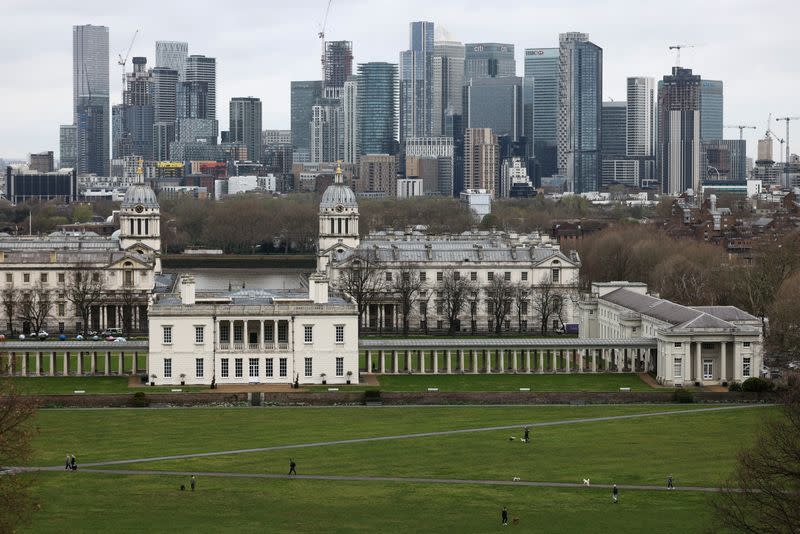England and Wales report most company insolvencies since 2009

By David Milliken
LONDON (Reuters) -England and Wales saw the most company insolvencies since 2009 during the second quarter of this year, government figures showed on Friday - a total which risks rising as higher Bank of England interest rates begin to bite.
On a seasonally adjusted basis, 6,342 companies were registered as insolvent in the three months to the end of June, 13% more than a year earlier and the highest since the second quarter of 2009, the official Insolvency Service agency said.
Insolvencies slumped in Britain during the COVID-19 pandemic, as businesses benefited from 80 billion pounds ($102 billion) of government-backed loans and a ban on court-ordered liquidations, which only fully ended in April 2022.
Many small businesses have struggled to repay these loans, and also face challenges from much higher Bank of England interest rates - which hit a 15-year high of 5% in June - as well as a big rise in energy bills and staffing costs.
"These numbers don't come as a surprise as many businesses navigate a turbulent macro environment having exited the pandemic already overleveraged," said Matthew Ingram, a managing director at risk advisory firm Kroll.
The most common form of insolvency - creditors' voluntary liquidations, where directors agree to wind up a company without a formal court order - rose to the highest since records began in 1960, at 5,240.
The number of compulsory liquidations, 637, was still below that seen before the start of the pandemic.
Earlier this month, the Bank of England said it expected Britain's corporate sector to be "broadly resilient" in the face of higher interest rates and weak growth, with problems concentrated among very small firms with relatively little debt.
However, David Kelly, head of insolvency at accountants PwC, said he thought an increasing number of larger companies would go into insolvency this year.
"Like homeowners coming off fixed mortgage rates, many businesses have yet to refinance their debt, meaning the full impact of higher interest rates may yet to be felt," he said.
So far in 2023, 157 businesses with annual revenue of over 10 million pounds have been declared insolvent.
Insolvency was most common in construction, wholesale and retail, and hospitality, though this partly reflected the high numbers of businesses in these sectors.
In Scotland, which has different insolvency laws to England and Wales, company insolvencies were 25% higher than a year ago.
($1 = 0.7807 pounds)
(Reporting by David Milliken; editing by Sarah Young, Andy Bruce and Susan Fenton)

 Yahoo Finance
Yahoo Finance 